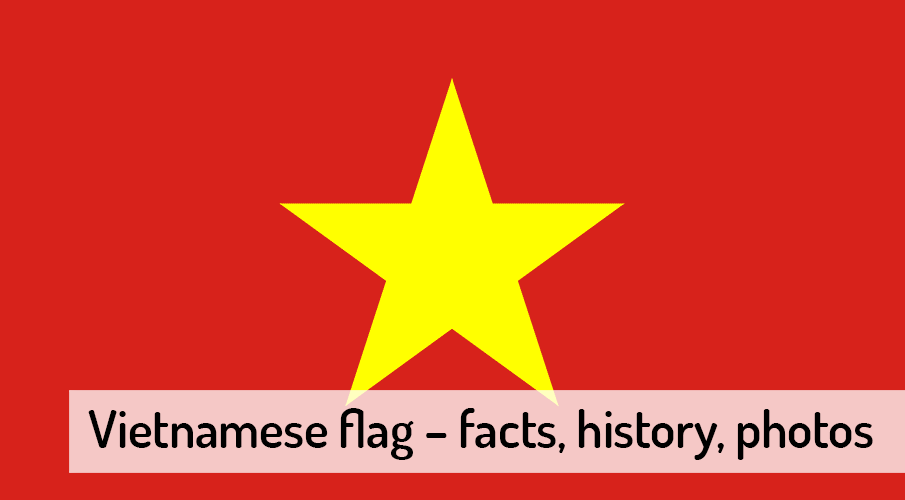
Vietnam Flag:
The flag of Vietnam features a golden star with five points on a red background. The red background symbolizes the bloodshed and struggle for independence of the Vietnamese people, while the star represents the unity of the Vietnamese people under the leadership of the Communist Party of Vietnam.
Facts about the Vietnam Flag:
- The current design of the Vietnamese flag was adopted on November 30, 1955.
- The flag’s five-pointed star is called the „Ngôi sao vàng“ in Vietnamese, which translates to „golden star.“
- The ratio of the flag’s width to its length is 2:3.
- The Vietnamese flag is similar in appearance to the flags of China and North Korea, which also feature a red background and golden star.
- The design of the Vietnam flag is based on the flag of the Soviet Union, which was an important ally of Vietnam during its early years of independence.
- The red color of the flag represents the blood of the Vietnamese people that was shed in the fight for independence, as well as the country’s commitment to socialism and communism.
- The five-pointed star on the flag is sometimes referred to as the „Star of Victory“ and is seen as a symbol of Vietnam’s triumph over colonialism and imperialism.
- The flag is typically flown at government buildings, schools, and other public institutions throughout Vietnam.
- During national holidays and other important events, the Vietnam flag is often decorated with flowers and other decorations as a sign of national pride and unity.
- In addition to its official use as the national flag of Vietnam, the flag is also used by Vietnamese communities around the world as a symbol of their cultural heritage and identity.
- The Vietnam flag has been modified several times throughout the country’s history, with changes reflecting shifts in political ideology, social values, and national identity.
- The Vietnam flag is one of several national flags that feature a star as a central design element, including the flags of China, North Korea, and Cuba.
History of the Vietnam Flag:
The history of the Vietnam flag is closely tied to the country’s struggle for independence and the development of its political and social identity. The first Vietnamese national flag was introduced in 1945, following the country’s declaration of independence from French colonial rule.
This flag featured a yellow star on a red background, which symbolized the five main classes of Vietnamese society united under the leadership of the Communist Party. This design reflected the country’s revolutionary spirit and its commitment to socialism and communism as a means of achieving social justice and economic equality.
In 1955, the design of the flag was modified to include a five-pointed star, representing the workers, peasants, intellectuals, soldiers, and youth of Vietnam. The new design was intended to reflect the changing political and social realities of the country, as well as its ongoing struggle for independence and self-determination.
Following the reunification of North and South Vietnam in 1975, the flag became the official flag of the Socialist Republic of Vietnam, which remains the country’s current form of government. Today, the flag is widely recognized as a powerful symbol of the country’s identity and its ongoing commitment to the values of socialism, communism, and national liberation.
Meaning of the Vietnam Flag:
The Vietnam flag is a powerful symbol of the country’s history and identity. Its design reflects the values of unity, solidarity, and struggle that are deeply rooted in Vietnamese culture.
The red background of the flag represents the blood that was shed by the Vietnamese people during their long struggle for independence. This includes the wars against French colonialism and American imperialism, as well as the internal conflicts that have shaped the country’s political landscape.
The yellow star on the flag represents the leadership of the Communist Party of Vietnam, which has played a central role in the country’s political and social development. The star also symbolizes the five main classes of Vietnamese society: workers, peasants, intellectuals, soldiers, and youth. These groups are seen as the foundation of the country’s revolutionary struggle, and the star represents their unity in the face of oppression and adversity. Overall, the Vietnam flag is a powerful symbol of the country’s resilience and determination in the face of adversity. It represents the struggle of the Vietnamese people to achieve independence and self-determination, as well as their ongoing commitment to building a strong, prosperous, and unified nation.
Flag of Vietnam – Colors:
| Scheme | Red | Yellow |
|---|---|---|
| Pantone | 1788 | Yellow 116 |
| CMYK | 0.88.88.11 | 0.0.100.0 |
| RGB | (226,28,28) | (255,255,0) |
| Hex triplet | #E21C1C | #FFFF00 |
| NCS | S 1085 Y80R | S 0570 G70Y |
Photos of vietnamese flag and symbols:
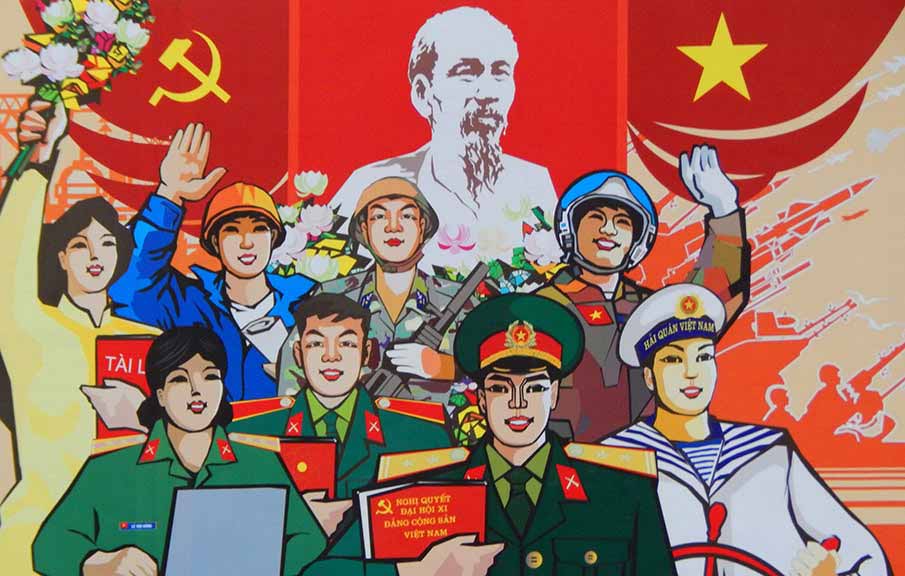
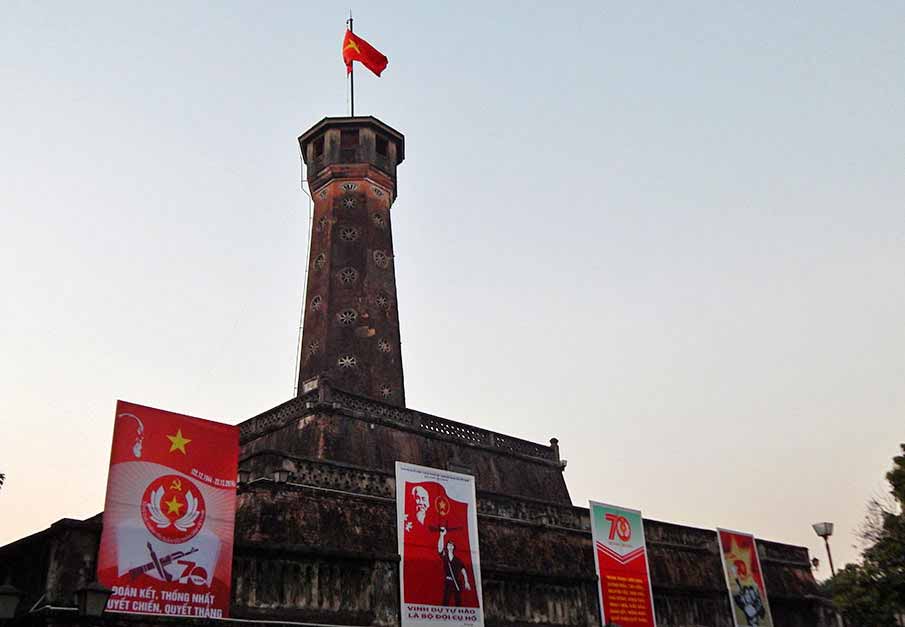

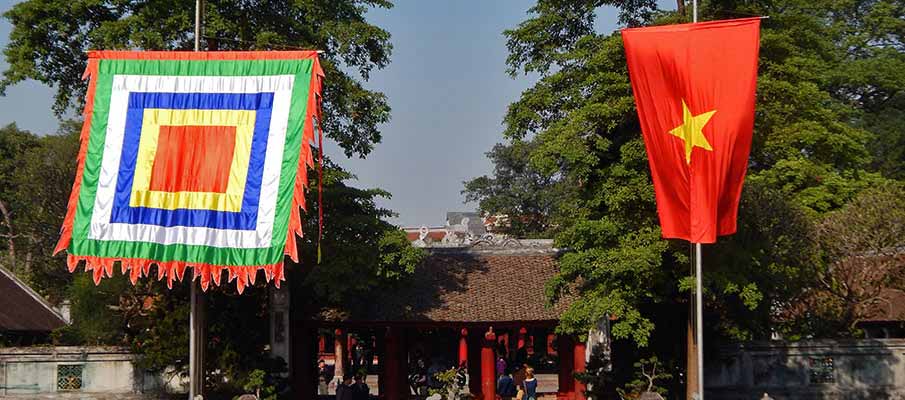
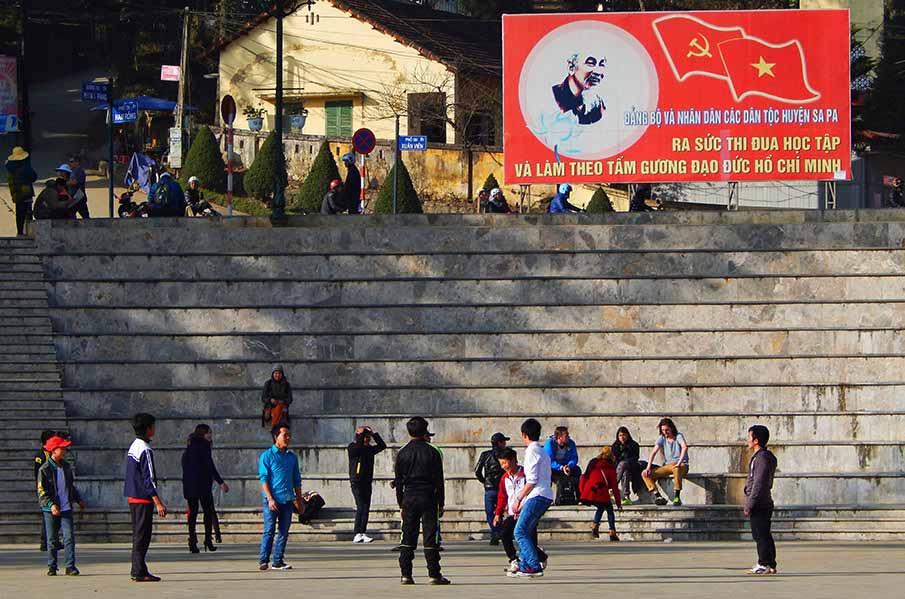
❓ FAQ + Useful Information about the flag of Vietnam:
1. What is the design of the Vietnam flag?
-
- The Vietnam flag features a solid red background with a large yellow star in the center. The star has five points and represents the five main classes of Vietnamese society: workers, peasants, intellectuals, soldiers, and youth.
2. What do the colors on the Vietnam flag represent?
-
- The red background of the flag represents the blood of the Vietnamese people who fought for independence, as well as the country’s commitment to socialism and communism. The yellow star represents the leadership of the Communist Party of Vietnam and the unity of the five main classes of Vietnamese society.
3. When was the Vietnam flag first adopted?
-
- The first Vietnam flag was adopted on September 2, 1945, when the country declared independence from French colonial rule.
4. Why was the Vietnam flag modified in 1955?
-
- The flag was modified in 1955 to include a five-pointed star to represent the five main classes of Vietnamese society. This change reflected the country’s changing political and social realities and its ongoing struggle for independence and self-determination.
5. What is the official name of the Vietnam flag?
-
- The official name of the Vietnam flag is the „National Flag of the Socialist Republic of Vietnam.“
6. Who designed the Vietnam flag?
-
- The designer of the Vietnam flag is not known, as the flag was created through a collaborative effort among members of the Vietnamese government and Communist Party.
7. What is the significance of the five-pointed star on the Vietnam flag?
-
- The five-pointed star on the Vietnam flag represents the five main classes of Vietnamese society: workers, peasants, intellectuals, soldiers, and youth. It also represents the unity of these groups under the leadership of the Communist Party of Vietnam.
8. Is the Vietnam flag used by any other countries?
-
- No, the Vietnam flag is unique to Vietnam and is not used by any other countries.
9. When is the Vietnam flag displayed?
-
- The Vietnam flag is typically displayed on national holidays, at government buildings, schools, and other public institutions throughout Vietnam.
10. Can the Vietnam flag be used for commercial purposes?
-
- Yes, the Vietnam flag can be used for commercial purposes, but it must be treated with respect and not altered in any way that would be disrespectful or inappropriate.
11. What is the protocol for displaying the Vietnam flag with other flags?
-
- When the Vietnam flag is displayed with other flags, it should be given the position of honor and placed in the center of the display. If there are an odd number of flags, the Vietnam flag should be placed in the center. If there are an even number of flags, it should be placed to the right of the center.
12. Can the Vietnam flag be flown upside down?
-
- No, the Vietnam flag should never be flown upside down, as this is considered a sign of distress and disrespect.
13. What is the symbolism of the Vietnam flag?
-
- The Vietnam flag symbolizes the country’s struggle for independence and its ongoing commitment to socialism, communism, and national liberation. The red background represents the blood of the Vietnamese people who fought for independence, while the yellow star represents the leadership of the Communist Party of Vietnam and the unity of the five main classes of Vietnamese society.
